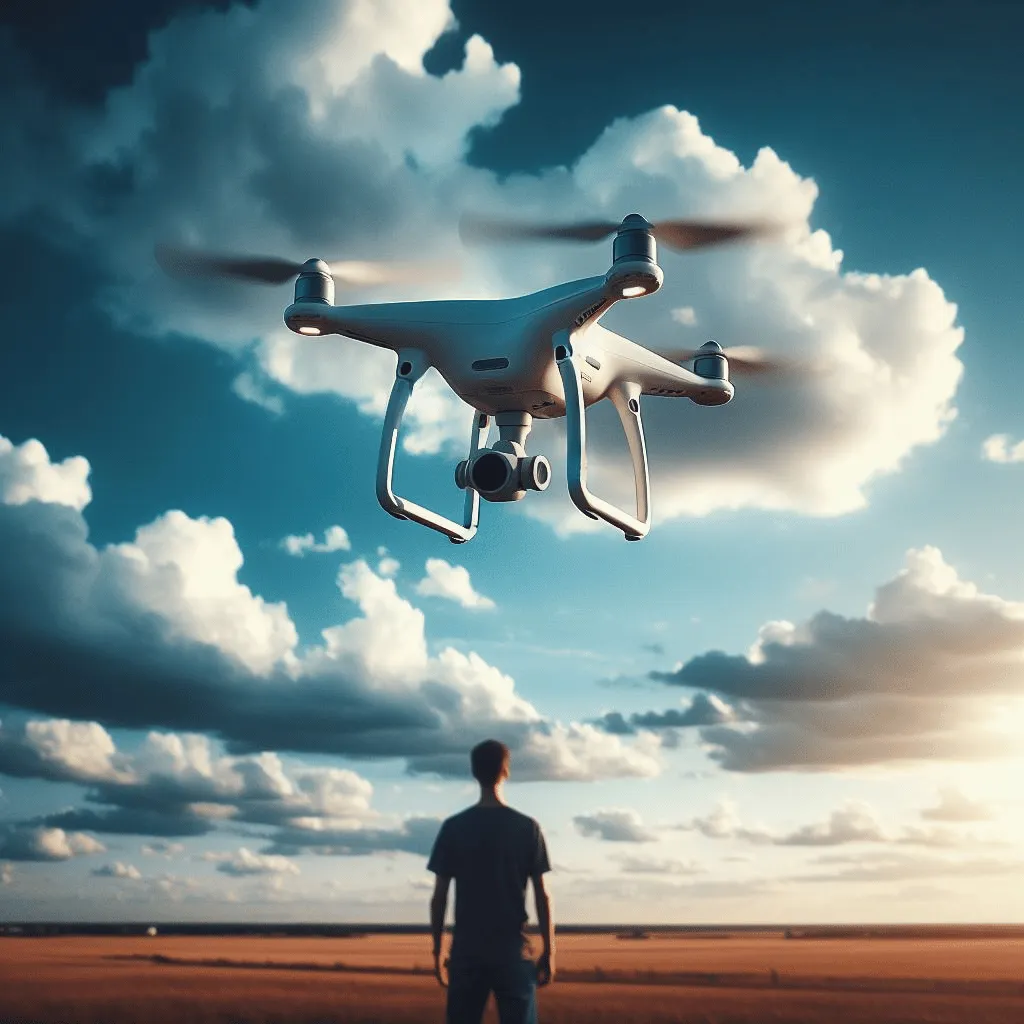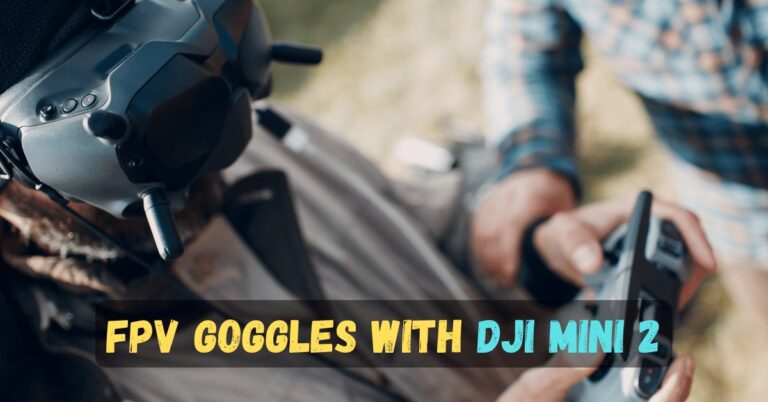Why is my Drone TILTING to One Side? (How to Fix it?)

So, you finally got yourself a shiny new drone, ready to take to the skies and capture breathtaking aerial footage.
But wait, why is your drone tilting to one side? Don’t worry, you’re not alone in this conundrum. Many drone enthusiasts have faced this issue at some point, and it can be quite frustrating.
But fear not, as we delve into the possible reasons behind your drone’s tilting behavior, we’ll help you troubleshoot and get your drone flying straight as an arrow.
Why is my drone tilting to one side?
There are several reasons why your drone might be tilting to one side, and it can be frustrating to figure out the culprit! Here are some possibilities:
Hardware issues:
Propellers:
Uneven damage or wear: Check each propeller for cracks, nicks, or bent blades. Any imperfections can cause imbalance.
Loose propellers: Make sure all propellers are securely attached and tightened to the motors.
Incorrect mounting: Double-check that the propellers are mounted in the correct direction and on the right motors (refer to your drone’s manual).
Motors:
Uneven thrust: One motor might be malfunctioning or providing weaker thrust than the others, causing the drone to tilt.
Damaged components: Internal motor issues like faulty bearings or windings can also lead to uneven thrust.

Sensors:
Gyro or accelerometer malfunction: These sensors help regulate the drone’s balance, and a faulty one could misinterpret the tilt, causing the drone to overcorrect.
Compass calibration: An improperly calibrated compass can lead to navigation errors, affecting the drone’s ability to maintain a stable position.
Center of gravity: Uneven weight distribution on the drone, for example from an unbalanced payload, can cause it to tilt towards the heavier side.
Software issues:
Flight controller calibration: If the flight controller settings are not properly calibrated, the drone might misinterpret its own tilt and struggle to maintain balance.
Firmware issues: Outdated or buggy firmware can sometimes cause unexpected behavior like tilting.
Environmental factors:
Wind: Strong winds can push the drone off-balance, causing it to tilt.
Electromagnetic interference: Other electronic devices nearby can interfere with the drone’s sensors and affect its flight stability.
Read More: What is DJI Cine Mode? Discover the 5 Secrets of DJI Cine Mode
What are the solutions to solve if a drone is tilting to one side?
Solving a tilt issue in your drone requires identifying the root cause. Let’s break down the potential solutions based on different factors.
Hardware Issues:
Propellers: If your propellers are unevenly damaged or worn, replace them with new ones matching the originals. Ensure tight and correct mounting following the manual’s instructions.
Motors: Consult a technician if there’s uneven thrust or damaged components. Repair or replacement may be necessary.
Sensors: For gyro or accelerometer issues, refer to the manual for calibration. If problems persist, contact the manufacturer. Also, perform compass calibration using your drone’s controller or app.
Center of Gravity: Rebalance the payload for even weight distribution on the drone.

Software Issues:
Flight Controller: Recalibrate the gyroscope, accelerometer, and compass using the drone’s calibration function. Check and install any available firmware updates for stability improvements.
Environmental Factors:
Wind: Fly in calmer conditions or adjust flight direction to compensate for the wind.
Electromagnetic Interference: Move away from potential interference sources like power lines or other electronic devices.
General Tips:
Remember, safety comes first! Never jeopardize yourself, others, or property. If the tilt persists or you’re unsure, prioritize safety and contact a qualified drone technician or the manufacturer for assistance.
Read More: When to Replace Drone Propellers? A Comprehensive Guide
Why is my drone camera tilting to one side?
If your drone’s camera is tilting to one side, it’s a separate issue from the drone tilting while flying. Let’s break down some potential causes and solutions:
Hardware Issues:
One common culprit is a malfunctioning gimbal. Drones with stabilized cameras use a gimbal to keep the camera level.
If the gimbal motor or components are faulty, it can cause the camera to tilt unexpectedly. Check for loose connections and any physical damage to the camera or gimbal housing.
Software Issues:
Calibration is key. Some drones require the camera and gimbal to be calibrated periodically for optimal performance.
Refer to your drone’s manual for calibration instructions. Outdated firmware can also lead to issues, so check for and install any available updates.
Additionally, explore flight controller settings related to gimbal stabilization or camera tilt, adjusting them as needed.

Environmental Factors:
Strong vibrations during flight can affect the camera gimbal. Check for loose components or propellers that might be causing vibrations.
Troubleshooting Tips:
And most importantly, prioritize safety! If the camera tilt significantly affects control, refrain from flying. Seek professional help if needed.
Read More: How to Fly a DJI Drone Without a Phone?
How do I calibrate my drone so that it won’t tilt?
Calibrating your drone is an important step to ensure smooth and stable flights. While the exact process varies based on your drone’s model, here’s a general overview to get you started.
Gyroscope and Accelerometer Calibration:
Before diving in, find a flat and stable surface, free from wind and vibrations. Power up both your drone and controller following the manual’s startup sequence.
Look for the calibration menu, often under sensor or IMU settings. Follow the on-screen or voice prompts, which typically involve placing the drone flat and making specific movements. Once done, your drone will confirm successful calibration.
Compass Calibration:
Choose an open area away from magnetic interference sources like power lines. Rotate the drone slowly in both horizontal and vertical planes while keeping it level, following the on-screen prompts. The drone will indicate successful calibration upon completion.
Gimbal Calibration (for drones with stabilized cameras):
Again, power up your drone and controller per the manual’s instructions. Navigate to the gimbal calibration menu.
Follow the on-screen or voice prompts, which usually involve keeping the drone still while the gimbal adjusts. Once done, your drone will confirm successful calibration.

Motor Calibration (optional):
Some drones allow motor calibration for consistent power output. Check your manual for specific instructions, especially if you suspect uneven thrust or propeller issues.
Additional Tips:
Remember, these are general guidelines, and your drone’s manual provides precise instructions. Always prioritize safety and follow the manufacturer’s guidance for accurate calibration.
Read More: What are Some Common Problems With The Phantom 4?
Final Thoughts – Why is my Drone TILTING to One Side?
Your drone’s tilting issue might seem daunting, but there’s usually a fix! Whether it’s uneven propellers, a faulty motor, or a software glitch, understanding the possible causes and using the troubleshooting tips I provided can get you back to smooth, stable flight.
Remember:
With the right approach and some troubleshooting spirit, you’ll have your drone soaring through the skies again in no time!

FAQs
Look for significant or sudden tilting, inconsistent flight behavior, or difficulty maintaining control. Any of these could indicate a serious problem requiring professional attention.
Mild tilting might be manageable for experienced pilots in controlled environments. However, prioritize safety and ground your drone if the tilt worsens or affects your ability to control it confidently.
Yes, strong winds can push your drone off-balance, causing tilting. Avoid flying in windy conditions or adjust your flight path to compensate for the wind.
Absolutely! Uneven weight distribution can easily tilt your drone. Ensure your payload is balanced and within the recommended weight limit for your specific model.
Many drone manufacturer websites have dedicated support sections with troubleshooting guides and forums. Additionally, online drone communities offer tips and advice from experienced pilots.







